Neurosurgeon, otolaryngologic surgeon coordination is key
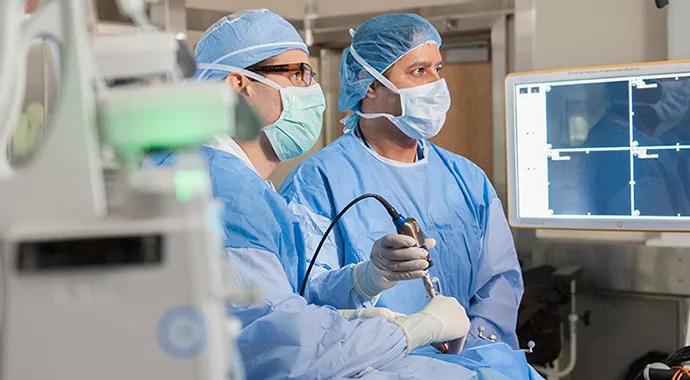
By Pablo Recinos, MD, and Raj Sindwani, MD
Cleveland Clinic is a non-profit academic medical center. Advertising on our site helps support our mission. We do not endorse non-Cleveland Clinic products or services. Policy
Minimally invasive endoscopic cranial base surgery is now a reality at Cleveland Clinic, with the recent establishment of our multidisciplinary Minimally Invasive Cranial Base and Pituitary Surgery Program. By accessing the brain and pituitary gland endoscopically through the nasal passages, our surgeons now can effectively perform complex procedures with far less morbidity.
The cranial base contains a large number of critical structures (e.g., cranial nerves, carotid arteries, basilar artery) in a small area. The proximity of these structures means that tumors involving the cranial base are among the most difficult tumors to access. A basic tenet of skull base surgery has been to create bony corridors in order to gain access to the target region and thereby minimize disruption of the overlying brain. Traditional approaches to the cranial base have involved large external incisions and craniotomies. More recently, endoscopic approaches via the nasal corridor have been used to access the cranial base (Figure 1), further minimizing the morbidity associated with these surgeries.
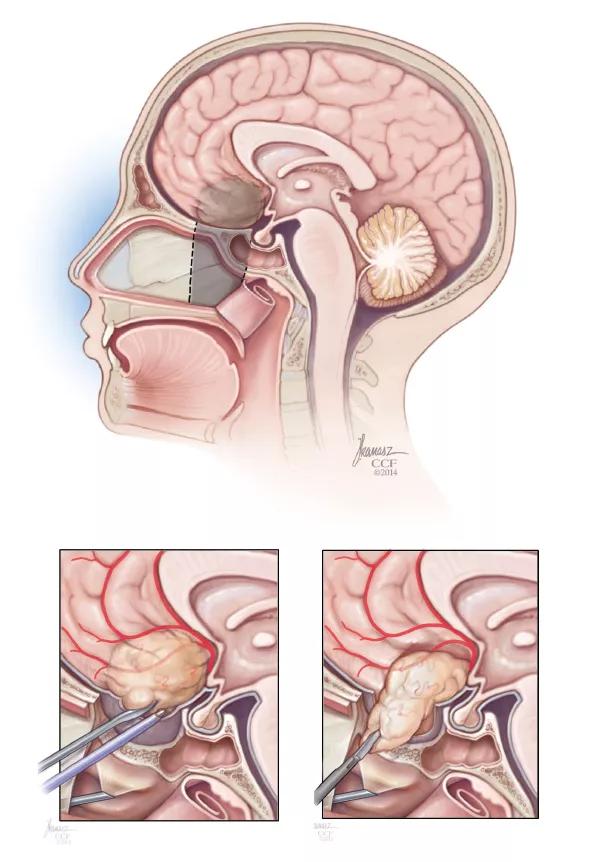
Figure 1. Illustration of an endoscopic endonasal resection of a planum sphenoidale meningioma. (Top) Sagittal view demonstrating the relationship among the tumor, the cranial base, the nose and the frontal lobes that have been displaced by the tumor. Accessing the tumor requires removal of the bone from the anterior cranial base (darkened corridor) and elevation of a vascularized flap of tissue from the nasal mucosa for subsequent reconstruction. (Bottom left) By accessing the tumor through a nasal corridor and initially removing the portion at the cranial base, the surgeons are able to remove the arteries that feed the tumor first, making tumor debulking safer and minimizing blood loss. (Bottom right) With the tumor adequately debulked, the lining of the tumor is removed without disrupting the surrounding brain and while preserving the anterior cerebral arteries, reducing patient morbidity.
Use of the endoscope in cranial base applications began with removal of pituitary tumors. Until recently, standard pituitary approaches typically were performed by an otolaryngologist using a sublabial or transnasal approach. Once the sella turcica (the region where the pituitary gland sits) was exposed, a metal retractor would be inserted. A neurosurgeon would then introduce the operating microscope and perform the tumor resection, after which the otolaryngologist would close the remaining defect. Visualization in these approaches was limited to the narrow corridor provided by the metal retractor, since the light source (the microscope) was outside the nose.
Recent years have seen increasing use of the endoscope instead of the operating microscope in pituitary surgery. With the tip of the endoscope serving as the light source, visualization of significantly larger areas has become possible, including the ability to look around previously unviewable corners.
An important distinction of endoscopic surgery is that it requires the otolaryngologic surgeon and the neurosurgeon to work simultaneously, as opposed to the sequential “tag team” approach used in traditional endonasal surgery. This “two surgeons, four hands” simultaneous approach allows us to tackle a wide array of complex cranial base conditions, but its success requires a shared philosophy and understanding between the two surgeons. We like to call this partnership “the dance,” as the two surgeons must perform their respective roles without stepping on each other’s toes.
Together with successful integration of the endoscope in pituitary surgery, advances in imaging technology and reconstructive techniques have expanded endoscopic techniques to significantly more complex cranial base locations. Specifically, high-resolution MRI and CT are used for intraoperative neuronavigation, which allows precise intraoperative localization similar to the way that GPS technology provides precise location information to a driver navigating a city. With the information from neuronavigation, more precise routes can be made to the target area, and critical structures are more easily identified and avoided. The result is a safer surgery.
Additionally, experience from open cranial base surgery has made clear that repair of large defects is critical to minimizing complications from the surgery. The use of vascularized tissue for repair has been the gold standard in cranial base surgery. Advances in reconstructive techniques using intranasal vascularized flaps have made repair of large cranial base defects possible even while the surgical team works through a purely endonasal corridor (Figure 2).
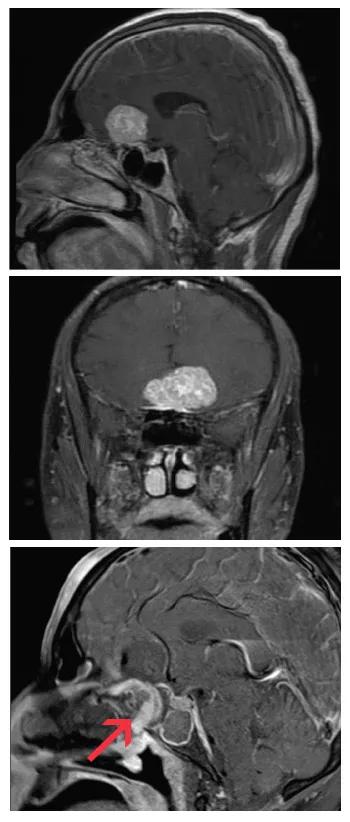
Figure 2. (Top and middle) T1-weighted MRIs showing a large anterior skull base meningioma that our surgical team resected completely via an endoscopic approach. Reconstruction of the large cranial base defect was performed with a pedicled nasoseptal flap. (Bottom) Postoperative MRI showing complete removal of the tumor and the presence of the nasoseptal flap (arrow).
Endoscopic approaches are now used to treat a wide array of pathologies, such as chordomas, chondrosarcomas, craniopharyngiomas, meningiomas, schwannomas and sinonasal cancers.
Endoscopic approaches offer a number of significant advantages over traditional open approaches for these problems. These include:
Establishment of Cleveland Clinic’s Minimally Invasive Cranial Base and Pituitary Surgery Program has been a highly multidisciplinary undertaking. In addition to our subspecialty-trained skull base neurosurgeons and rhinologists, the program draws on the essential expertise of pituitary endocrinologists, neuro-ophthalmologists, neuroradiologists, neuro-oncologists and radiation oncologists. The aim has been to align this expertise in a single program to provide a streamlined experience for patients with a range of cranial base pathologies.
This specialized clinical know-how is complemented by a leading-edge operating theater with the most advanced equipment. In addition to the neuronavigation system, the program’s OR includes endoscopic ultrasound devices, specialty microdebriders and drills, and a large array of newly designed sinus and skull base instruments adapted for complex endoscopic cranial base and pituitary procedures.
Although not all cranial base conditions can or should be treated endoscopically, our experience is revealing that expertise in endoscopic approaches is an essential component of truly comprehensive care for cranial base problems.
Dr. Recinos is Section Head of Skull Base Surgery in the Rose Ella Burkhardt Brain Tumor and Neuro-Oncology Center in Cleveland Clinic’s Neurological Institute. He is also Co-Director of the Minimally Invasive Cranial Base and Pituitary Surgery Program.
Dr. Sindwani is Section Head of Rhinology, Sinus and Skull Base Surgery in Cleveland Clinic’s Head & Neck Institute and has a joint appointment in the Rose Ella Burkhardt Brain Tumor and Neuro-Oncology Center. He is also Co-Director of the Minimally Invasive Cranial Base and Pituitary Surgery Program.
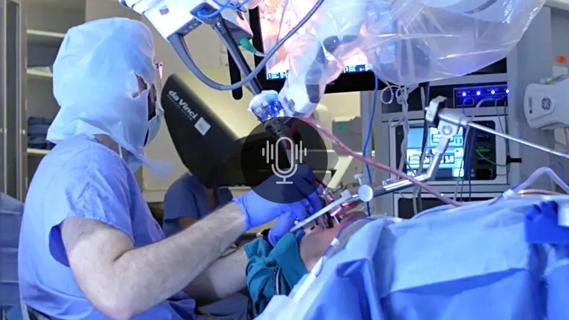
A new single-port system well-suited for oropharyngeal cancer treatment

A reduction in the number of incisions for implantation simplifies the procedure and improves patient experience

An answer may be seen by looking at the teeth

How advanced blood testing is changing treatment paradigms
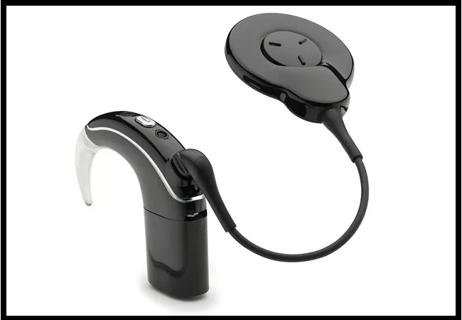
Hearing implant program continues to grow

Study compares hearing aids and combination devices

Rapid recoveries and positive outcomes underscore the value of this operation